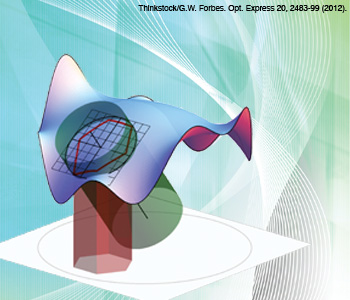Feature
Freeform Optical Surfaces: A Revolution in Imaging Optical Design
A revolutionary optical surface is the result of developments in the theory of aberrations, techniques in optical system optimization, computation speed, precision fabrication of surfaces without symmetry, and extensions to the range of the surface slopes allowed in optical testing.

Thinkstock/G.W. Forbes. Opt. Express 20, 2483-99 (2012).
In today’s world, it is often difficult to separate hype from reality, even in science, particularly when one uses a word such as “revolution.” Here, this word is chosen from the perspective of a technology that is 130 years old: the freeform optical surface. While astronomers and a few mathematicians had developed some perspectives on mirror shapes and simple lens systems extending back to the early 1600s, it was not until Abbe, Schott and Zeiss joined forces in the 1880s that the art of optical design, fabrication and testing began a rapid transformation into a science.
…Log in or become a member to view the full text of this article.
This article may be available for purchase via the search at Optica Publishing Group.
Optica Members get the full text of Optics & Photonics News, plus a variety of other member benefits.
